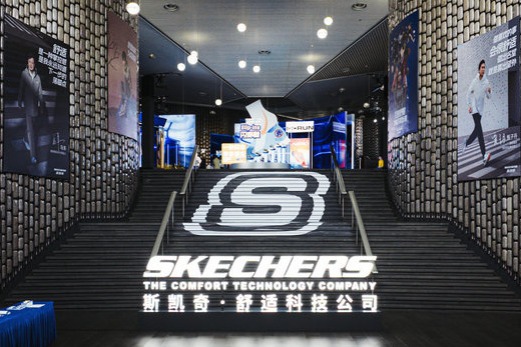Our Terms & Conditions | Our Privacy Policy
Skechers laces up for growth in China
Riding on China”s push to revive consumer spending and tap its vast domestic market, the United States-based athleisure company Skechers plans to increase investments, fortify local supply chains and double down on innovation to seize more market share in the country.
China has placed strong emphasis on consumption as a key driver of economic growth. In the Government Work Report delivered in March, the country outlined a series of measures to boost domestic demand, positioning the expansion of consumption as one of its top policy priorities for the year.
Willie Tan, CEO of Skechers China, South Korea and Southeast Asia, said these efforts aim to stimulate household spending, improve the consumption environment and unlock the potential of China’s huge consumer market.
“The trade tensions between China and the US have a profound impact on the global economic order,” said Tan. “We firmly believe that the advantages of China-US cooperation significantly outweigh any disadvantages.
“In the wave of economic globalization, the world has transformed into a closely connected global village,” he said, adding that China, as the world’s second largest economy, boasts a substantial consumer market and a comprehensive industrial ecosystem, providing significant impetus for the growth of multinational corporations.
Skechers, which entered the domestic market in 2007, has opened nearly 3,500 points of sale across the Chinese mainland and developed online sales operations on multiple e-commerce platforms.
Optimistic about the Chinese market, Skechers has invested over 60 million yuan ($8.25 million) in recent years to establish an Asia-Pacific product innovation center, as well as an imaging studio and livestreaming facility in Dongguan, Guangdong province, aiming to better meet the needs of local consumers.
With a total investment exceeding 3 billion yuan, Skechers is building the second phase of its China logistics center project in Taicang, Jiangsu province. Upon completion, it will serve as a key hub for both its online and offline logistics operations in China.
In 2024, the US footwear and apparel company achieved a record-high global sales revenue of $8.97 billion, with China standing out as its largest overseas market. As a key growth engine, the Chinese market plays a pivotal role in supporting the company’s goal of reaching $10 billion in global sales by 2026, according to its annual financial report and latest growth plan.
Emphasizing the importance of strengthening the supply chain in China, Tan highlighted the need for increased resource allocation to harness digital technologies, enhance supply chain efficiency and expand the local operations team to ensure greater agility and responsiveness to the evolving Chinese market in the years ahead.
With a well-established local supply chain and strong product development capabilities, Tan noted that about 90 percent of the products sold by Skechers in China are “Made in China”.
Looking ahead to the second half of 2025 and guided by macro policies focused on boosting consumption and expanding domestic demand, he said Skechers will intensify efforts to align with national strategic priorities and enhance the resilience of its local industrial chain, supporting China’s efforts to stabilize foreign trade and foreign investment.
Despite recent US tariff hikes affecting economies around the world, many multinational corporations have reaffirmed their strong commitment to the Chinese market, said Lin Meng, director of the modern supply chain research institute at the Beijing-based Chinese Academy of International Trade and Economic Cooperation.
Lin said that China’s role in global supply chains remains indispensable, and that China-US collaboration can help mitigate the operational disruptions triggered by escalating trade tensions.
China’s stable and business-friendly environment contributed to a modest rebound in foreign direct investment in March, with actual FDI inflows into the Chinese mainland rising 13.2 percent year-on-year, data from the Ministry of Commerce showed.
Images are for reference only.Images and contents gathered automatic from google or 3rd party sources.All rights on the images and contents are with their legal original owners.



Comments are closed.